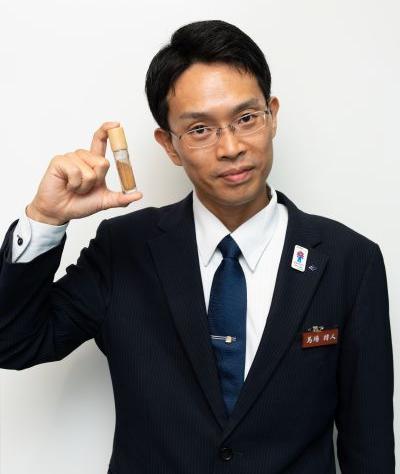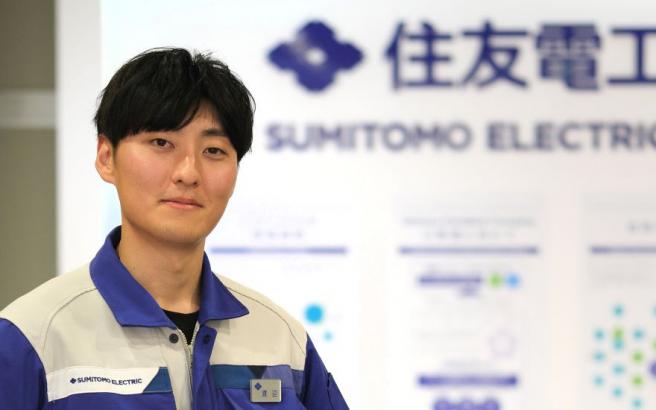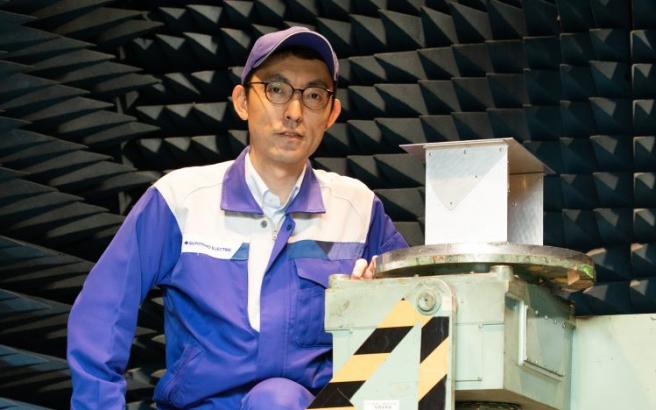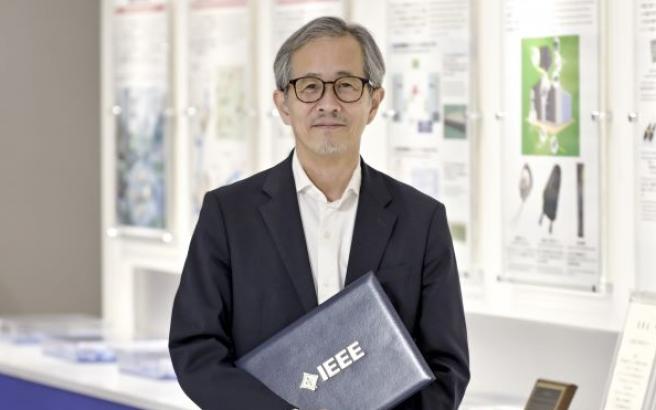From CO₂ to Materials, Pioneering Carbon Recycling with metacol™

Feasibility Study of Iron Carbonate Synthesis
Dr. Masato Baba
Assistant Manager, Advanced Materials Laboratory
"Humanity will perish due to global warming."
This shocking forecast I encountered at the age of 10 changed the course of my life. I dreamed of becoming a scientist who could eliminate harmful greenhouse gases, and that dream has shaped my entire research career. As a student, I studied photosynthesis and the synthesis of biofuels from biomass, and I gradually came to see CO₂ not as a "bad gas" to eliminate, but as a resource that is an integral part of the material cycle. Solving problems through circularity rather than through elimination became my new vision.
With the desire to implement solutions in society rather than confine them to the lab, I joined Sumitomo Electric. I am now working on metacol™, an original technology that synthesizes iron carbonate (FeCO₃) from CO₂ and iron. This is our challenge: to transform CO₂ from a waste gas into a recyclable material.
Rethinking CO₂ as a Material—A Manufacturing Challenge Inspired by Sumitomo Electric’s Spirit
Sumitomo Electric has a long history of turning familiar materials—such as copper into wires, glass into optical fibers, and iron powder into sintered components—into high-performance products using proprietary technologies. Inspired by this tradition, I began to ask myself: could CO₂, one of the most abundant and underutilized substances around us, also be transformed into a valuable material?
This question led to the development of metacol™, a proprietary low-temperature, low-pressure chemical reaction process. By reacting iron (Fe), water (H₂O), and carbon dioxide (CO₂), the system produces iron carbonate (FeCO₃) and hydrogen gas. I designed a custom reactor that allows CO₂-containing gas bubbles to interact efficiently with iron powder, enabling both high CO₂ absorption and FeCO₃ synthesis.
Furthermore, FeCO₃ derived from CO₂ is non-explosive and, when blended with resins, improves rigidity, heat dissipation, and flame resistance. This breakthrough opens new possibilities for converting overlooked substances and minerals into functional composite materials with industrial value.
 Handcrafted iron carbonate nameplate by our skilled factory team
Handcrafted iron carbonate nameplate by our skilled factory team
Seeing Technology and Challenge from the Outside
Today, I work at MUIC Kansai, an open innovation center where startups, government agencies, and large corporations collaborate. In this environment, the speed of social implementation is everything. Surrounded by people who act with urgency and conviction, I’ve found new energy in pursuing real-world impact.
At the same time, I have come to see the true strength of Sumitomo Electric’s R&D. From inside the company, it can be difficult to recognize just how forward-thinking and implementation-driven our research is. But to external partners, our commitment to addressing social issues is often unexpected—and deeply respected.
The development of metacol™ crossed internal boundaries. With strong backing from senior management and through both internal and external funding programs, the project grew to several dozen times its original scale in just three years. This experience has shown me that Sumitomo Electric provides a rare environment where unconventional ideas are welcomed, and technologies with the potential to benefit society are genuinely supported.
 Paper sun visor made with metacol™, blocking UV rays
Paper sun visor made with metacol™, blocking UV rays
Creating Social Value with metacol™
metacol™ is the first technology in the world to industrialize iron carbonate. As a novel material, it holds the potential to combine with various products from Sumitomo Electric, creating solutions that balance both performance and sustainability. At our Osaka and Itami Works, we have already built carbon-negative reaction systems. In addition, we are engaging in partnerships with other companies and even resort facilities to explore new models of carbon recycling involving local communities.
metacol™ represents more than just a materials innovation. By converting invisible emissions such as CO₂ into visible, tangible products used in daily life, we are giving individuals a way to actively participate in the decarbonization journey. This is why I believe there is strong potential to expand from B2B applications to B2C partnerships with companies that share our vision. Guided by the philosophy of Goho-Yoshi, which emphasizes value creation for five key stakeholders—customers, employees, suppliers, communities, and shareholders—I hope to use metacol™ not only to help address global challenges but also to spark the creation of future technologies and businesses.
I believe transformative technologies always originate from bold, unconventional perspectives. I take inspiration from innovators like Henry Ford and Steve Jobs, as well as from our Chairman Masayoshi Matsumoto, who encourages us to be courageous nonconformists. These words give me strength as I continue to pursue the dream I had as a child. As we grow older, we naturally become more skilled at reading the room and navigating complex environments. Yet in the end, what supports us most are the efforts we made while chasing our passions. That is why I will never forget where I started. I will continue to challenge myself to create technologies that change the future.

Related Information
[External Link] MUIC Kansai



